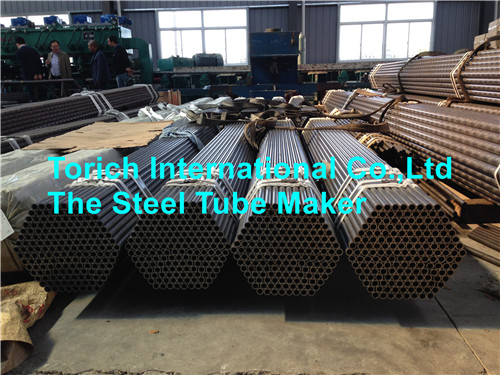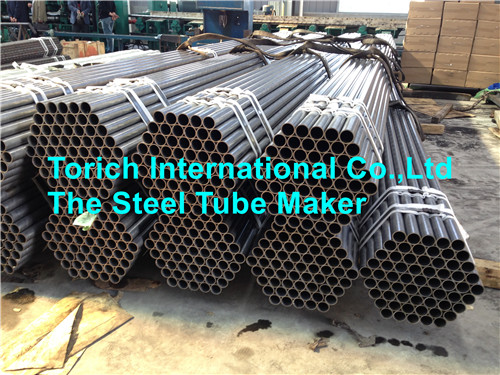Recently, the "superconducting magnetic separation water treatment system" developed by the Institute of Physics and Technology of the Chinese Academy of Sciences and the Application of Superconductivity Research Center has made new progress. The superconducting magnetic separation water treatment system with superconducting magnet as the core has been successfully operated. The magnetic separation water treatment equipment has broken through from scratch, and the system can be automated and stable for a long time. Through debugging and testing, the water treatment system has been able to carry out sewage treatment experiments efficiently and quickly, and the control experiments show that the sewage treatment effect is remarkable.
At present, industrial wastewater treatment methods mainly include chemical methods and biochemical methods. However, practical chemical methods and biochemical methods have problems such as large investment, high operating cost, long reaction time, large floor space, low efficiency, and high energy consumption. For the small paper mill wastewater treatment, these problems are more prominent. The manufacturers have invested too much in the establishment of sewage treatment facilities, and most of them adopt straight discharge, which causes harm to the environment. Therefore, research on new, efficient and low-cost superconducting magnetic separation industrial wastewater treatment technology is of great significance for China's energy conservation and emission reduction.
The work of the Institute of Physics and Chemistry of the Chinese Academy of Sciences has overcome the above problems and made innovative progress in the magnetic seed material and superconducting magnet cooling technology. The organic film with active groups is grown on the surface of Fe3O4 magnetic particles by plasma organic coating technology. This layer of nano-thickness film can effectively capture organic and inorganic ions in sewage, instead of adding organic flocculant, and due to organic film. It has a strong binding force with Fe3O4, which makes this new composite "magnetic seed" material reusable, which has obvious advantages over pure Fe3O4 magnetic seed material.
The use of this "magnetic seed" material for paper mill wastewater treatment experiments shows that the COD value of the effluent wastewater treated by magnetic separation is reduced from the initial 1780mg/L to 147mg/L, the removal rate is over 90%%, and the purification effect is good. Another technological innovation is the use of a chiller to directly cool the superconducting magnets, thereby freeing the superconducting magnets from the use of expensive liquid helium. This will make the superconducting magnetic separation sewage treatment system easy to use in areas lacking liquid helium, especially suitable for Small and medium-sized enterprises with small scale. It is a technology with great potential application value in the future.
It is understood that the magnetic separation technology was first applied to the beneficiation and porcelain industry. Before the Soviet Union in 1960, the magnetic coagulation method was used to treat the dust removal wastewater of steel plants. However, the permanent magnet or electromagnet has a limited magnetic field strength and is not ideal for the treatment of weak magnetic particles. In recent years, researchers at home and abroad have tried to separate magnetic impurities by superconducting magnetic separation technology. Compared with traditional chemical methods, biological methods and common electromagnetic separation, the superconducting magnetic separation method has small investment, small footprint and power consumption. Small and other advantages. In terms of land occupation, the superconducting magnet with a field strength of up to 3~5 Tesla, plus the corresponding refrigeration equipment, covers an area of ​​no more than 20m2. In terms of energy consumption, since the superconducting material has no resistance, the superconducting magnet consumes almost no electric energy, and only the low-temperature chiller consumes electricity, and the power consumption per day does not exceed 100 kW·h. In terms of cost, the superconducting magnet of 3~5 Tesla is about 1.5 million yuan. For equipment with a processing scale of 1,000 tons per day, the investment is less than 2 million yuan. Therefore, superconducting magnetic separation technology is a technology with great potential for wastewater treatment. The results show that the superconducting magnetic separation technology has obvious effect on the magnetic separation and purification of steel plant wastewater rich in iron oxide impurities. However, this technology can only separate magnetic pollutants in water, for petroleum production water, papermaking, chemical, pharmaceutical, food, etc. Industrial wastewater and urban domestic sewage, because most of the toxic and harmful substances in these wastewaters are organic, they are not magnetic, and they cannot be separated effectively by magnetic separation.
Researcher Li Laifeng from the Institute of Physics and Chemistry of the Chinese Academy of Sciences proposed a plasma-modified magnetic species for superconducting magnetic separation technology, which can effectively solve the above problems. Firstly, an external coil and a plasma organic polymerization device powered by a radio frequency power supply are designed. The magnetic particle material is subjected to surface plasmon organic polymerization modification, and the modified magnetic species form various desired surface functional groups. These reactive groups can be combined with the non-magnetic harmful substances in the sewage, and then the strong magnetic field of the superconducting magnet can be used to separate the pollutants in the wastewater to achieve the discharge of industrial sewage. Li Laifeng and his research team conducted a preliminary discussion on the floc mechanism. It is believed that the magnetic species acts as an electrolyte to weaken the electric double layer on the surface of the contaminant, and the pollutants form flocs through electrostatic adsorption and bridging and net trapping. By adjusting the type of surface functional groups of the magnetic species, the technique can be adapted to different types of sewage treatment. The magnetic species used at the same time can also be reused by desorption.
In the superconducting magnetic separation wastewater treatment technology, the development of high-efficiency magnetic species is the key. To achieve good sewage treatment results, the magnetic material is required to have: 1 as high a volume magnetic susceptibility as possible to obtain a better magnetic response; 2 as low a coercive force as possible, to reduce agglomeration without an external magnetic field; The particle size, small particle size, large surface area, high activity, can better combine with pollutants in sewage, but the particle size is too small, it will affect the magnetic susceptibility, and the loss is also large when used, which is not conducive to recycling and repetition. Use; 4 chemically stable, not easy to be corroded; 5 surface modified in a suitable way, so that the magnetic species can better combine with contaminants, and through the different ways of surface modification to achieve different types of sewage treatment.
Low-temperature superconducting magnetic separation water treatment is a cutting-edge new technology with important application prospects. It is considered as a new technology for industrial applications after the application of superconducting magnets in medical nuclear magnetic spectrometers and mineral magnetic impurity separation. . With the rapid development of the economy, environmental pollution and energy shortage have become the focus of the country. At present, China's superconducting magnetic separation technology has made breakthroughs, and its application in water treatment is expected to become a symptomatic prescription for solving water pollution problems, which is of great significance to the development of national economy.
A superconducting magnet application technology research shows that the superconducting high gradient magnetic separation technology can be used for purification and separation of wastewater from papermaking, chemical and pharmaceutical industries. Different from the traditional superconducting magnetic separation technology, it can only separate the magnetic impurities in minerals, coal and kaolin. This technology separates the non-magnetic organic and inorganic pollutants in industrial wastewater by adding the modified magnetic seed particles in advance to realize the industry. The discharge of sewage is up to standard.
The Institute of Physics and Chemistry of Low Temperature Materials and Applied Superconductivity Research Center began research on low temperature superconducting technology in 2005. After several years of accumulation, it has done a lot of related basic research and exploration, especially for the research and development of magnetic seeds, and successfully developed for different pollutants. Different applicable magnetic seeds. Optimized design in equipment development, reasonable layout, footprint less than 6m2, can be designed as vehicle-mounted mobile, stable water flow, continuous system operation, simple operation, and become the first superconducting magnetic separation water treatment system in China, creating a domestic A precedent for the application of superconducting magnetic separation technology in water treatment.
Seamless Alloy Steel Tubes/Alloy Steel Tube, produced by Cold Drawn and Cold Rolling production using Alloy Steel Grade,
The manufacturing Process of Nickel Alloy Steel Tube as below:
Hot piercing from round steel billet into hollow sections, after pickiling and fabrications,
the cold drawn or cold rolled is applied to achieve final target size.
Alloy Steel Grade:
T2, T5, T9, T11, T12, T17, T21, T22, T91,T92, 15Mo3,16Mo3, 13CrMo44;
SAE4130, SAE4140, 40Cr, 40Cr4, 10CrMo910, 12CrMo910, 11CrMo910,
25CrMo4, 35CrMo, 35CrMo4, 42CrMo4, 34CrMo4, 20MnV, 20MnV6,20CrMn,12Cr1MoVG;
Steel Tube Heat Treatment is usully with following conditions:
BK, No heat treatment,
+C, No heat treatment,
+SRA, Stress Releived Annealing
+N, Normalized Heat Treatment
Q+T, Quenching and Tempering


Seamless Alloy Steel Tubes
Seamless Alloy Steel Tubes,Seamless Alloy Steel Pipe,Precision Engineering Pipe,Ferritic Alloy Steel Pipe,Nickel Alloy Steel Tube
Torich International Co.,Ltd--The Steel Tube Maker , http://www.chinasteeltubepipe.com